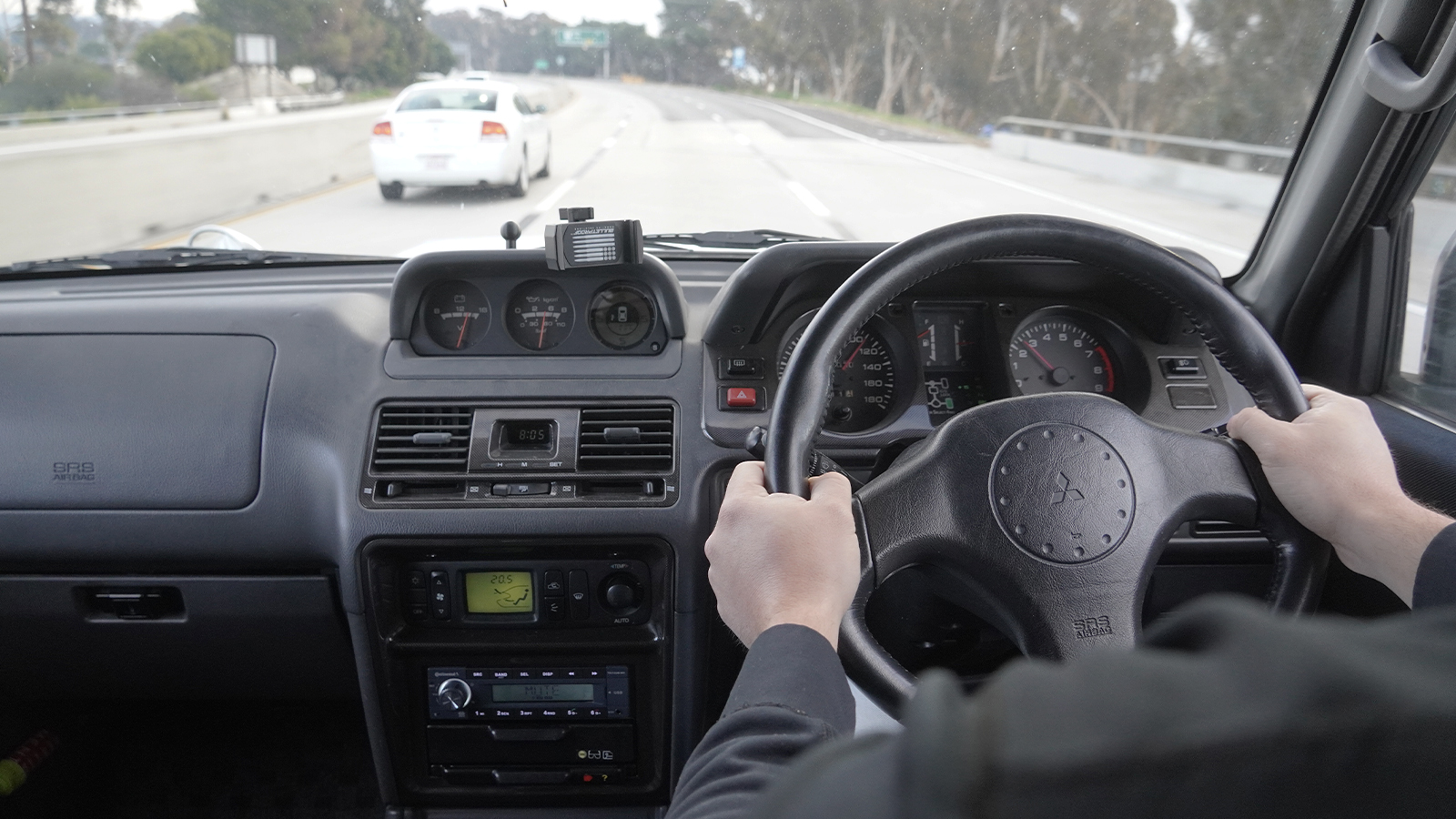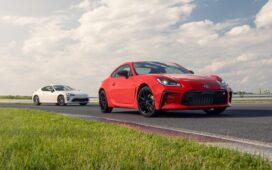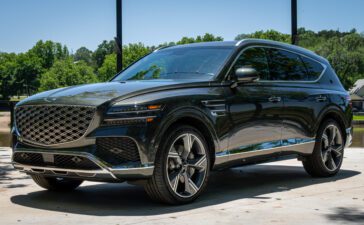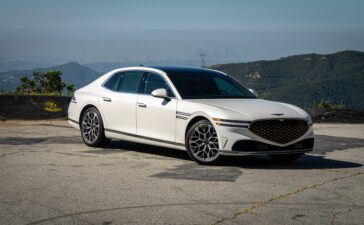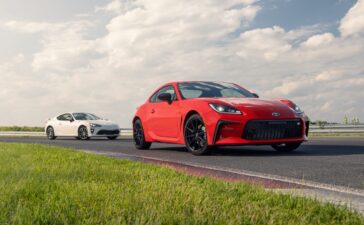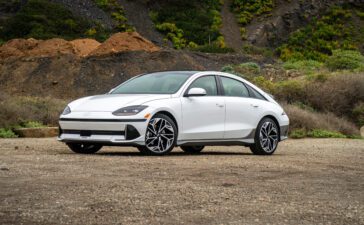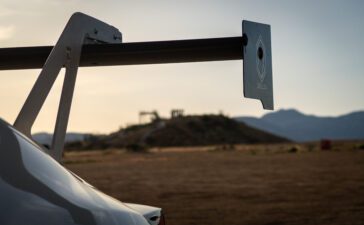This past Wednesday, my 1998 Mitsubishi Montero with 245,000 miles on the odometer went into the shop. Not for a breakdown, rest assured, but because I want a professional to install 4.90 final drive rings and pinions—but much more on that build coming soon here at Acceleramota.
More importantly, with the Montero getting work done, I now face the all-too-real prospect of full-time daily driving my 1997 Mitsubishi Pajero Evolution in Los Angeles traffic. Not that I avoided right-hand drive in LA previously, but until a press car arrives or the weather improves enough for me to ride my 2006 Ducati Monster S2R 1000, the PajEvo is the only running car in my garage.
And I can admit, before I bought the Pajero, the prospect of daily driving a JDM (or UK) import made me a little nervous. So I’m here now to nudge along anyone who might feel similar hesitations, which may or may not be the reason they haven’t purchased the JDM (ahem, or UK) car of their dreams: Do it. You get used to right-hand drive surprisingly quickly.
[Button id=”409″]
Skip to section:
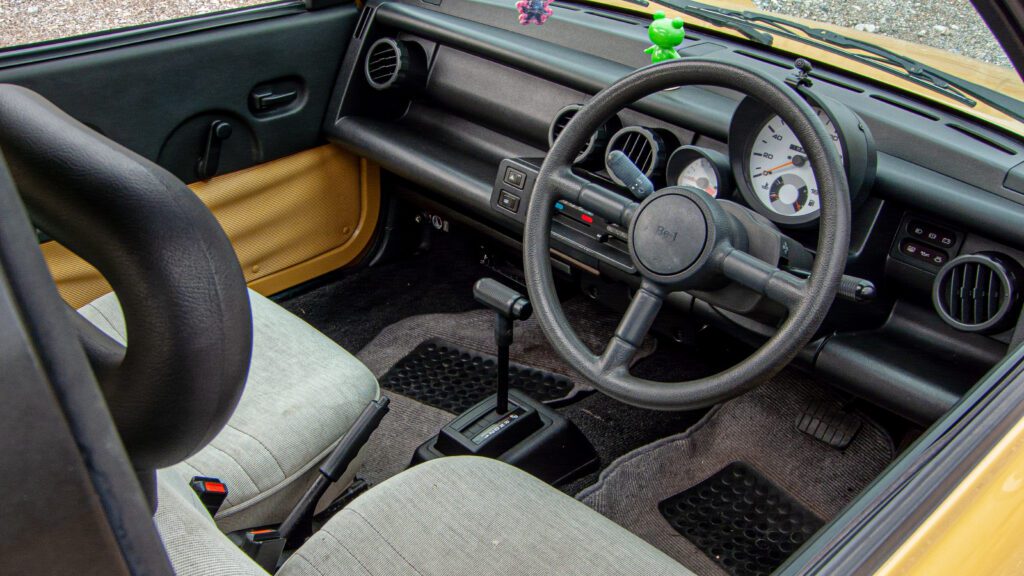
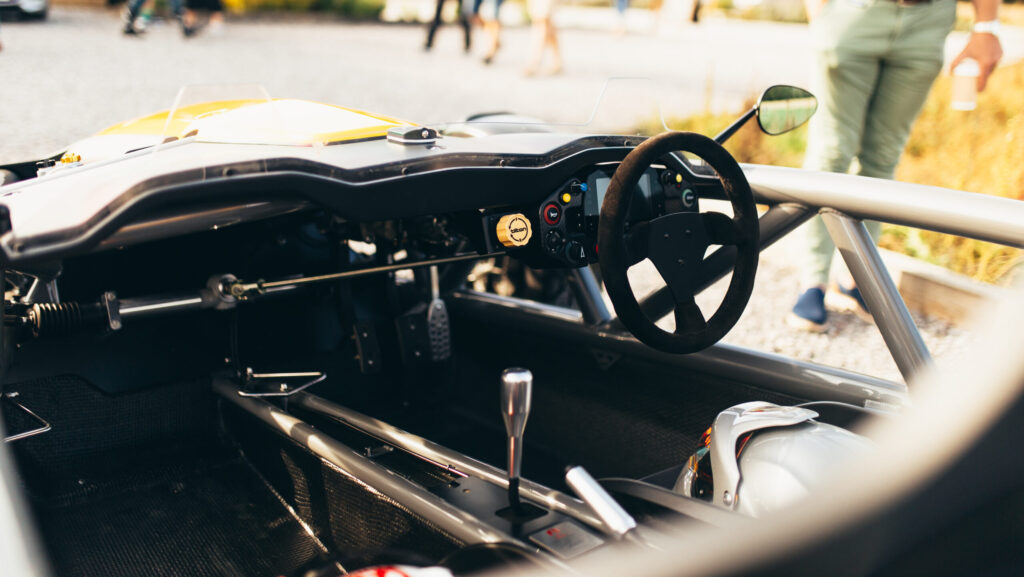
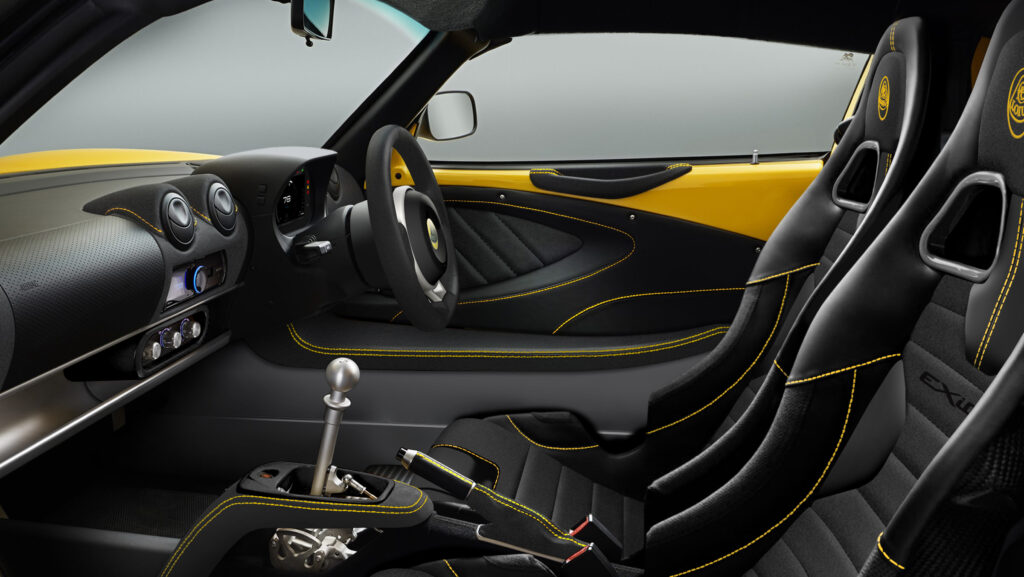


Picking up a PajEvo at the port
My non-Lancer Evo arrived at Long Beach just over a year ago, four months after a slightly lucky situation in the Japanese auction houses left me a surprise homologation special with my name on it. I knew almost nothing about the importation process previously, but I worked with Rami Fetyani at Inbound Motorsports to handle the shipping and customs paperwork. Extensive COVID delays outside anyone’s control while booking a ro-ro spot meant that I doubted the Evo’s battery would arrive in America with enough juice in the tank to turn over the engine, so I showed up to the port with a jump pack and trailer just in case.
Good thing, too, because a bit of drama promptly ensued—the long story short, it involves two trucks with jumper cable leads revving at the same time, an empty gas tank, a bone-dry transmission pan, and full-sending the new-to-me PajEvo up onto the trailer bed. And yet, as nervy as the day went, I almost breathed a sigh of relief because my first RHD experience wouldn’t be stop-and-go commuting north on the 405 freeway during rush hour.

I had rented RHD cars in St Lucia and Scotland previously, but in those environments, all the signs and lanes and other cars help with the adjustment to steering from (objectively, or so I formerly thought) the wrong side of a car. In the good old US of A, I imagined the experience differently because I rarely see other RHD cars. Surely, bumping off rearview mirrors and head-on collisions leap up in frequency, right? Tracking in lanes without overthinking, left-hand turns with zero visibility, and high-speed passing on two-lane roads also nagged at my subconscious. Eek.
Sure, I’d also tracked a center-seat F4 racecar for a hard day at Radford Racing School without any struggles adjusting, but that hyperactively paranoid mindset also helps explain why I decided on a Pajero Evolution with an automatic transmission rather than a manual. And not just to keep me from adjusting to RHD with a stick shift in the left hand, but also in the hopes that my friends could drive the truck without undue concern for damaging an awesome piece of Dakar history (through an accident or frying the clutch or grinding the gears).

Mild inconvenience or major pain in the…
I plan to share more about the long process of getting the Pajero up and running soon, too, but in the meantime, I found myself quickly adjusting to steering from the right (wrong) side of the road. The first few times out, luckily, I drove out on empty desert roads down the hill from Wrightwood, CA. Those ruler straights interrupted by occasional long sweepers helped me overcome a noticeable sense of awkwardness and at least establish a bit of confidence before I drove into town. Of course, I mixed up my turn signal and windshield wiper stalks constantly once I needed them changing lanes or while making turns, while also spending far more time correcting my positioning in lanes than I would more fluidly driving a left-hand-drive car.
Luckily, I noticed that on the Evo, that cute little Japanese parking mirror on the left of the hood just happens to give a perfect view of the lefthand lane stripes from the right-hand driver’s seat. When Doug DeMuro brought a Pajero Evo onto Jay Leno’s Garage, Leno spent the whole time raving about the mirror and glossing over the rally history—but in reality, it’s probably an even bigger help here in an LHD country than while parallel parking in Japan.
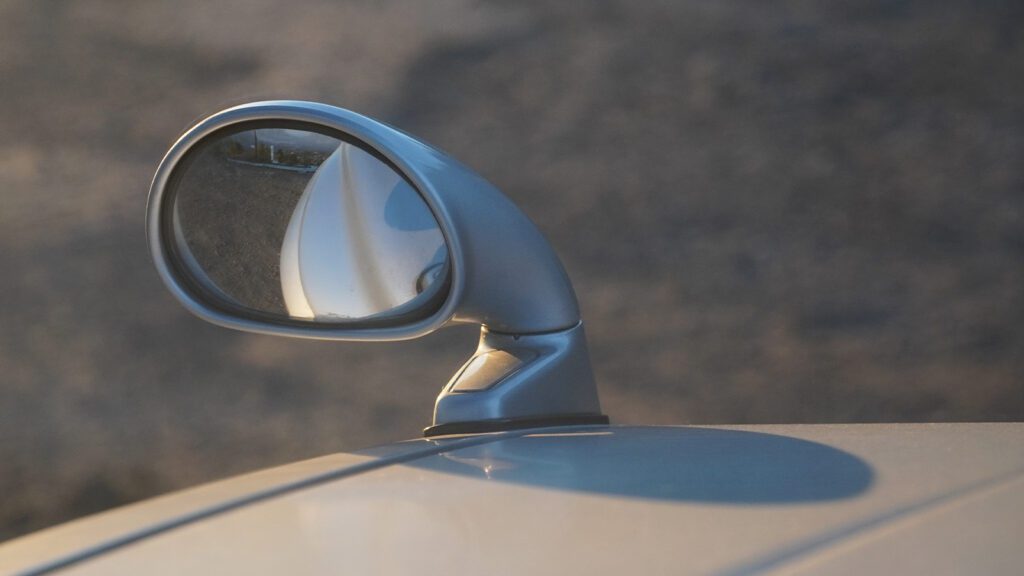
Parallel parking an RHD car here in the USA, meanwhile, makes doing so in an LHD car seem unbelievably difficult and unnecessarily complex. Just look down. The curb is right there, no problemo (the Evo’s short wheelbase and incredibly tight turning radius also help, without a doubt).
From a visibility standpoint, I can admit that making left turns in city traffic does kind of suck. At least the Pajero’s stance and upright Recaro seats let me look right over most cars and through any big American SUVs. But when I get stuck behind a panel van or an SUV with tinted glass, I quickly learn that patience becomes the name of the game. Not my strong suit, to be sure, but you just have to accept that the car in front of you almost needs to clear the intersection entirely before enough of the road becomes visible to make a safe decision about whether to follow. I also believe I probably check the driver’s side door mirror rather than the main rearview more often than on an LHD car.
On the other hand—another bad dad pun, get used to it—I can confirm that my other main concern, about passing on highways, definitely 100% sucks. Again, patience. Inching out around slower cars to check for oncoming traffic requires a tentative peek around the right side first, then a quick jab out for an initial glance to the left. Next, downshift (using the PajEvo’s sick tiptronic-style automatic shift lever) and rev up to the moon, ready to punch that throttle if a window opens up. But maybe also hover over the brakes with your left foot…

Unexpected challenges that I never pre-visioned also crop up now and then. The left A column creates a weird blind spot when inching forward to make a wide right-hand turn. Shifting into Park to climb across the passenger seat while grabbing tickets at a parking garage entrance never looks smooth—the best bet is to only use parking garages with a friend in the other seat. And speaking of it, I often wonder whether cops only check the right-hand seat while scanning for offenders in the carpool lane. Probably better not to risk it, given my historical luck with Murphy’s Law, but I suspect that RHD cars might get more frequently mistaken for HOV-eligible passenger vehicles.
Hilariously, I also now mix up the wiper and turn signal stalks repeatedly on LHD cars that aren’t mine (of which I drive an inordinate number in this game). And I’ve noticed that passengers often climb into the PajEvo’s passenger seat only to subconsciously put their right foot on a non-existent brake pedal.
Ha, gotcha suckers.
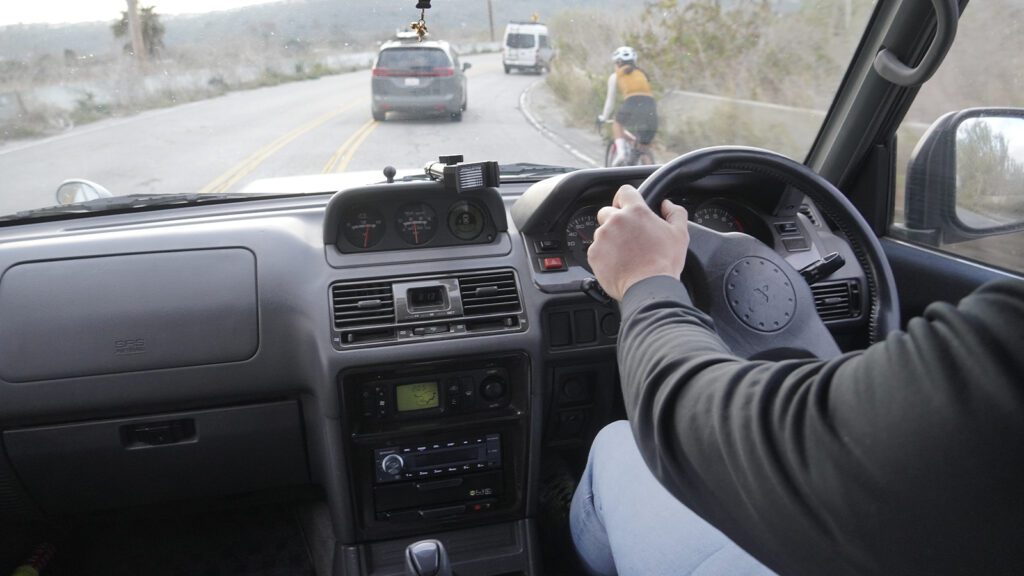
Avoiding cyclists becomes far easier, too, and in fact, a bigger challenge for me has been constantly converting kilometers per hour on the speedo and Celsius on the climate control to Imperial units.
The absolute strangest experience since adjusting to right-hand drive here in the USA? Flying to the UK and then driving a LHD Porsche built there. Talk about a real mindfuck. I spent the whole time shifting badly and overcorrecting, entirely baffled by roundabouts and oncoming traffic throughout the solid half-hour of an embarrassing performance. Luckily, the owner of that half-million-dollar build braved the experience better than my fragile male ego.
A shopping list for the growing love of JDM classics
Equally luckily, roundabouts are still rare here in the US. I expect they’d provide a bit of a challenge for JDM or British car owners new to RHD, but that experience of acclimating to a new car actually provides part of the appeal to me now. And there are so many awesome cars that we simply never got a chance to enjoy Stateside. Fair warning: I know my taste is odd, but a few I have my eye on now:
Nissan Pulsar GTI-R
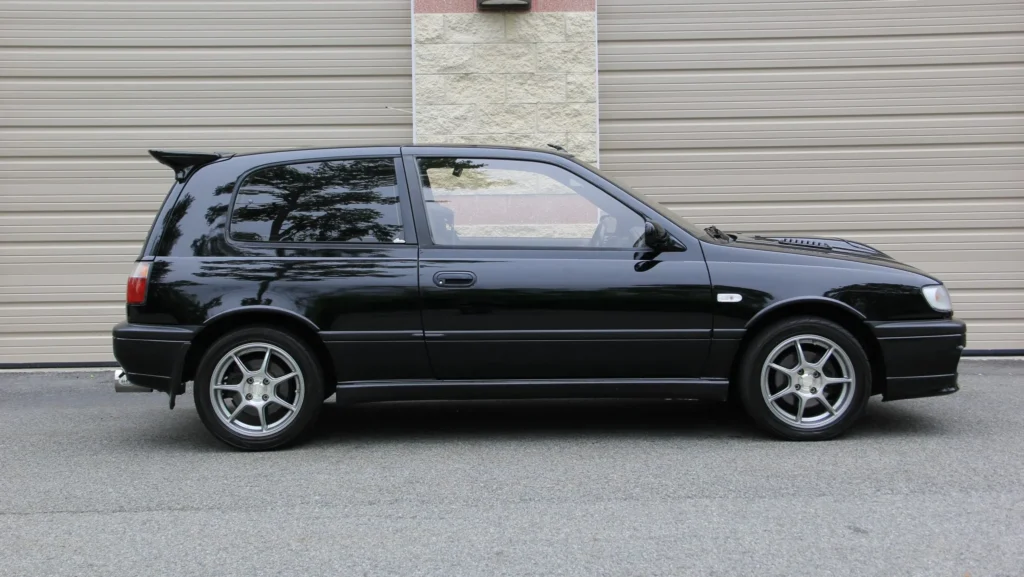


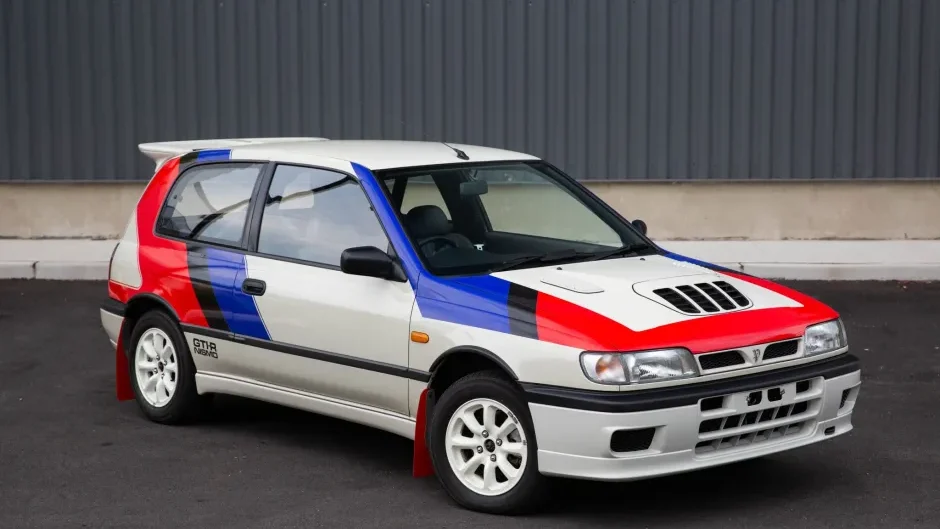
One of the most underrepresented hot hatches ever, with an SR20DET turbo-four, the ATTESA all-wheel-drive system from a Skyline GT-R, and a five-speed manual. A curb weight of only 2,690 pounds and an easily tunable 227-horsepower four-banger allowed the Pulsar GTI-R to beat a Porsche 911 in a quarter-mile at the time. Now imagine with modern tires and a bit more boost, all in a cute little package complete with a hood scoop and a big rear wing. Heck yes.
Mitsubishi Delica



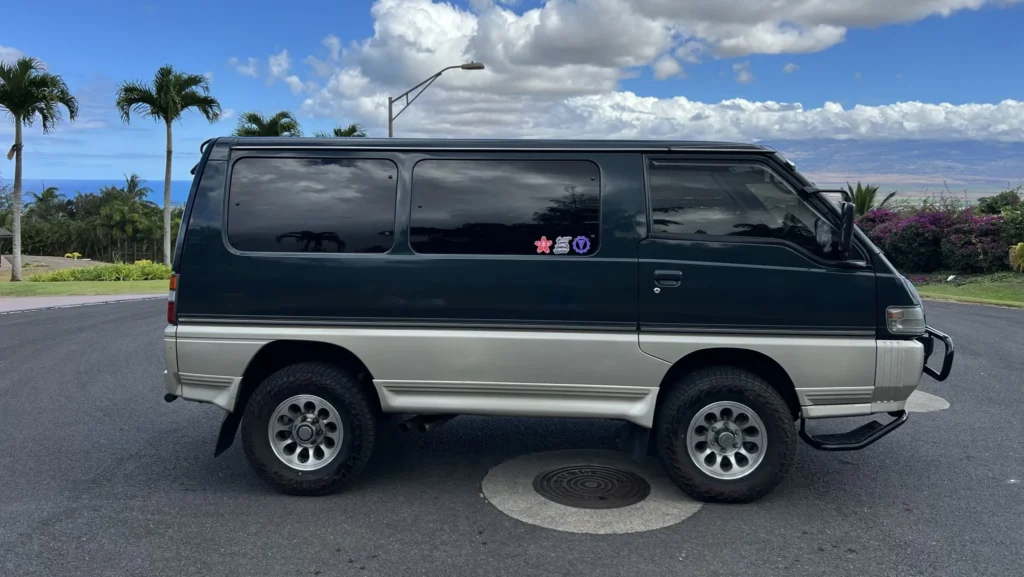
The Delica, van form of my Montero and Pajero siblings, is available with a similar Super Select four-wheel-drive system and plenty of suspension travel. The “van life” and overlanding trends make these awesomely capable vehicles somewhat more valuable now, but as an enclosed replacement for either a kei truck or an American-market Mighty Max pickup to haul motorcycles, a Delica might just do the trick perfectly.
Honda N360 (N600s pictured)

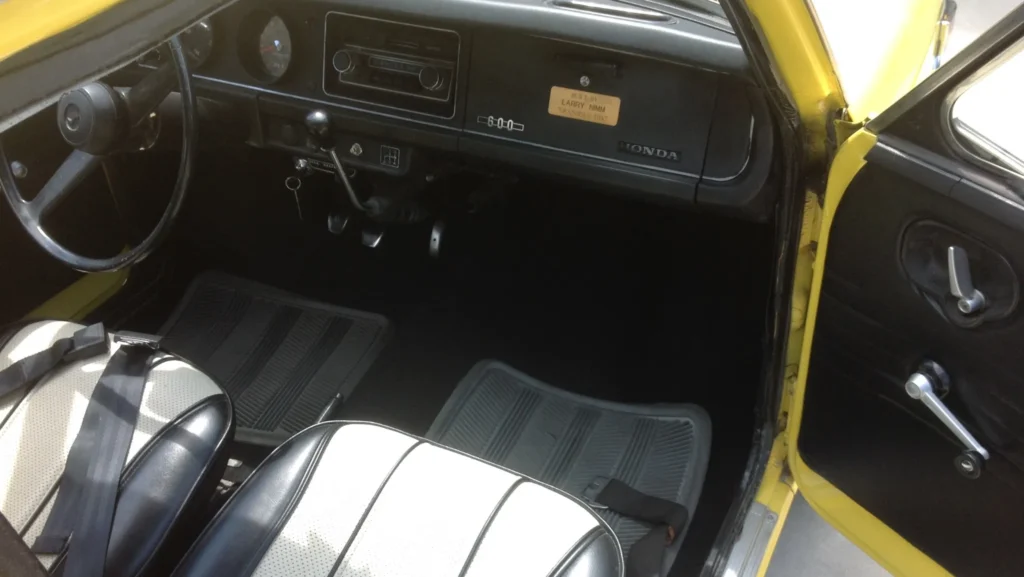
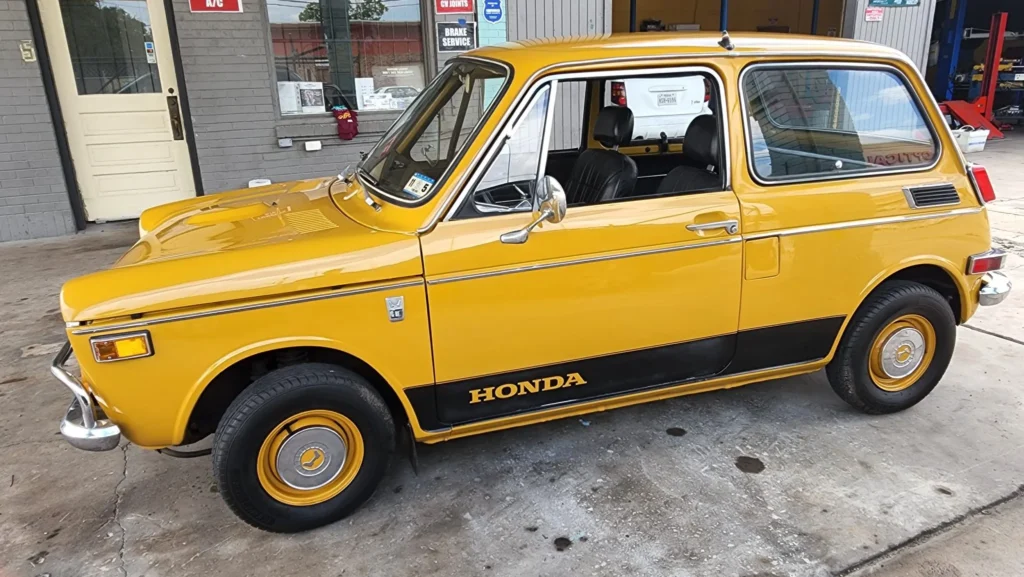

An early kei car with an air-cooled two-cylinder engine and chain drive, the transmission mounted in the motor’s oil sump, and quintessential 1960s Honda style! Think about the lil’ N360 or its Westernized twin, visually-identical N600, with a Hayabusa swap (heresy!) or, at the very least, a higher-performance Honda motorcycle engine.
Toyota Century
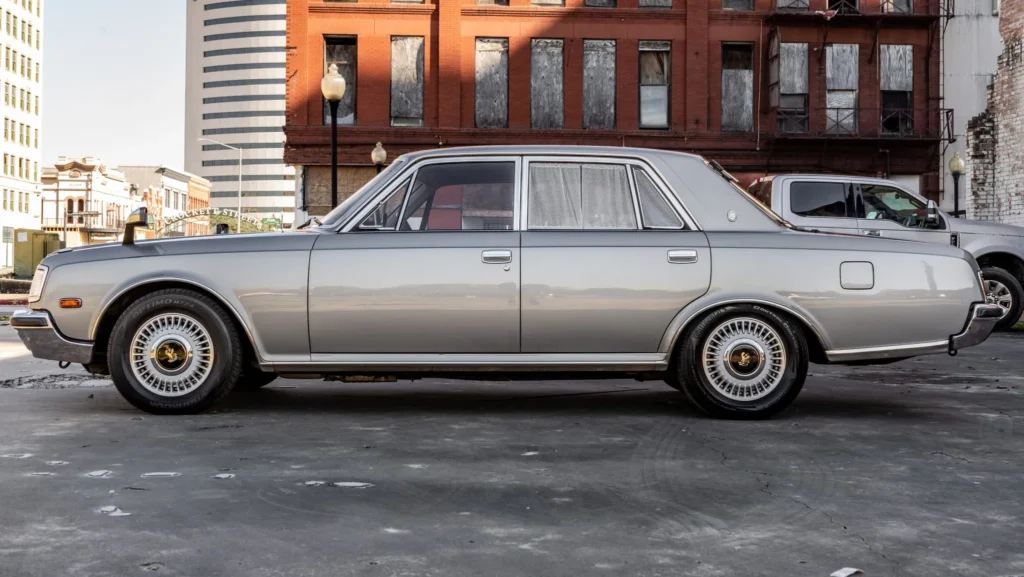


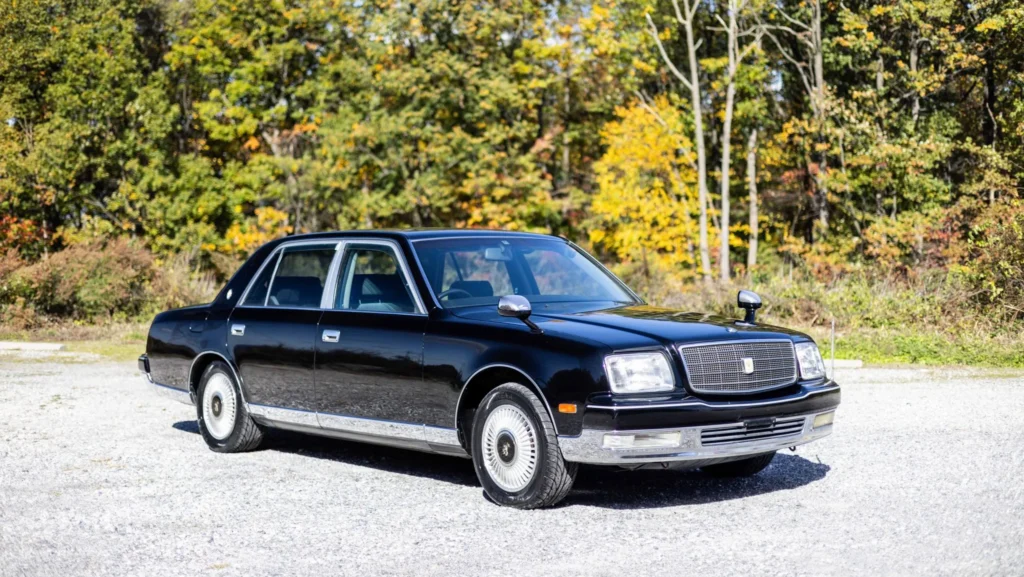
I probably want a second-gen Toyota Century to live out my dictatorship dreams with the Rolls Royce of Japan, complete with a V12 engine, and gotta have the lace blinds. Too bad my chauffeur would have to handle navigating this big RHD boat while shuffling me around parties in the Hollywood Hills, but the ride home afterward would be absolute bliss (because I’d be sound asleep, cradled in ultimate late-1990s luxury.
A case for right-hand drive
That Toyota Century daydream, however, loses track of one of the best aspects of dailying an RHD car in the United States: namely, that most JDM cars take up far less space on the road than typical American cars, trucks, and SUVs. Even the Pajero Evo, which shares plenty of components with the full-size Gen 2/2.5 and Gen 3 Monteros sold here in the United States, somehow still feels small and nimble thanks to that short wheelbase.
Speed helps, too, especially for highway passing. Unlike most kei trucks and vans that are blowing up in popularity these days, the PajEvo counts as legitimately quick, if not truly fast. And not just in a straight line, where the 276-horsepower rating of the Japanese “Gentleman’s Agreement” feels entirely underrated. But also while cornering. I even chased down a Ferrari 360 Modena recently in the Malibu canyons (the guy was driving hard but not well, clearly). Not that I’d ever forget this is still a body-on-frame truck wearing high-sidewall LT-metric off-road tires that also flex and lean while turning. But still, Evolution definitely means something.
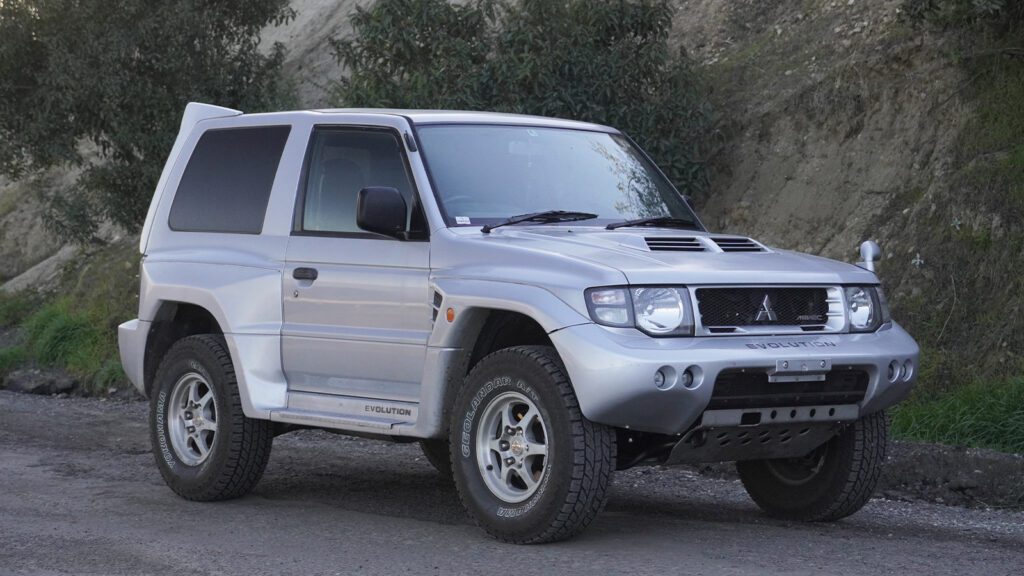
Then there’s actual off-roading, which of all the Pajero Evos I’ve yet seen in the USA, mine undoubtedly does the most. Out on fast-graded roads and in wide-open deserts, the RHD adjustment period just flies right by. But on tighter or rockier trails, where tire placement becomes extra important, I still need a bit more practice. Tilted over to the right, either from the left tires riding up on rocks or while cornering hard in the canyons through a left-hander, still creates a bit of vertigo as I occasionally sneak a glance down. Keep those eyes where you want to go. I can hear the Radford crew shouting.
And yet, after about a year of on-and-off RHD experience and then a more solid block of time with my Montero in the shop and no press loaner in my garage due to the holidays, the confidence while driving from the right side only grew more and more quickly. So, to those on the fence about actually importing a JDM car, I say go out and get it.
After finding the right car, importing the PajEvo wasn’t even too bad—I can highly recommend Rami at Inbound Motorsports. The only hard part about the whole process was having the patience to wait while shipping took four months. But after that waiting period, having the patience to get used to RHD will feel like an absolute cinch.

